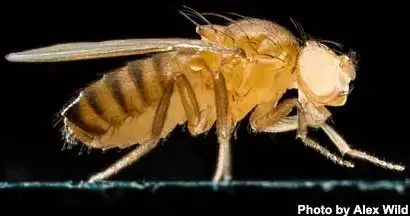Does the white gene affect Drosophila behavior?
- Kaun Lab

- Mar 1, 2024
- 2 min read
Updated: Mar 2, 2024

A lot of times, our ‘wild-type’ background used in Drosophila studies isn’t actually wild-type. It often has a mutation in a gene that affects eye or cuticle color, for example. I would say the most common of these mutations is in white, the gene that encodes an ABC-type guanine transporter. This is important because it plays a role in transporting molecules such as cyclic GMP, biogenic amines and pigments including drosopterins and ommochromes. cGMP and biogenic amines can have significant effects on behavior. So, of course, we need to understand if and how white affects behavior. The short answer is Yes - mutations in white affect sooo many behaviors, basically anything that involves the fly moving. Below are listed a few studies I have found. I’m sure there are more out there.
Locomotion, sensitivity to light, sensitivity to ethanol w-;CS vs w+;CS https://pubmed.ncbi.nlm.nih.gov/30872709/
Ethanol sensitivity w- vs mini-w: https://pubmed.ncbi.nlm.nih.gov/24890118/
Locomotion induced by spatial restriction: https://pubmed.ncbi.nlm.nih.gov/26351842/
Locomotion (w1118 vs mini-w locomotion): https://pubmed.ncbi.nlm.nih.gov/32964643/, https://pubmed.ncbi.nlm.nih.gov/29454066/
Age-dependent body mass, boundary preference, anoxia recovery, locomotion in w1118 vs CS: https://pubmed.ncbi.nlm.nih.gov/28087331/
Copulation success: https://pubmed.ncbi.nlm.nih.gov/28794482/ and sexual competition: https://pubmed.ncbi.nlm.nih.gov/2124105/
Courtship: https://pubmed.ncbi.nlm.nih.gov/19012054/, https://pubmed.ncbi.nlm.nih.gov/24205022/, https://pubmed.ncbi.nlm.nih.gov/11342383/, https://pubmed.ncbi.nlm.nih.gov/10858821/, https://pubmed.ncbi.nlm.nih.gov/8844509/, https://pubmed.ncbi.nlm.nih.gov/7777542/, https://pubmed.ncbi.nlm.nih.gov/817707/
Response to general anesthesia: https://pubmed.ncbi.nlm.nih.gov/11745669/
Geotaxis: https://pubmed.ncbi.nlm.nih.gov/807604/
That being said, my feeling is that it’s OK to use a white fly as your background strain. This could be background for circuit experiments that use UAS and Gal4 transgenes for example, or background for another mutation you think will be interesting to test. But, keep in the back of your mind the possibility that any potential mutant phenotype could arise as a consequence of an interaction between white and your mutation of interest. If you are concerned and want to be rigorous, then outcross/backcross all of your mutations/transgenes to a wild-type flies before testing behavior. I don’t do this unless necessary because I feel more comfortable if there’s a visual marker of the transgene.
Which brings up another question - can mini-w in transgenes rescue phenotypes caused by a white mutation? I don’t think this has been rigorously tested across all behaviors, but some of the papers I mention above include an analysis that suggests there can be rescue, or partial rescue. My experience suggests this is dependent on the transgene and the behavior. Do you know of more studies where white affects behavior? Or have any tips, questions or comments regarding this post? Please comment below!



